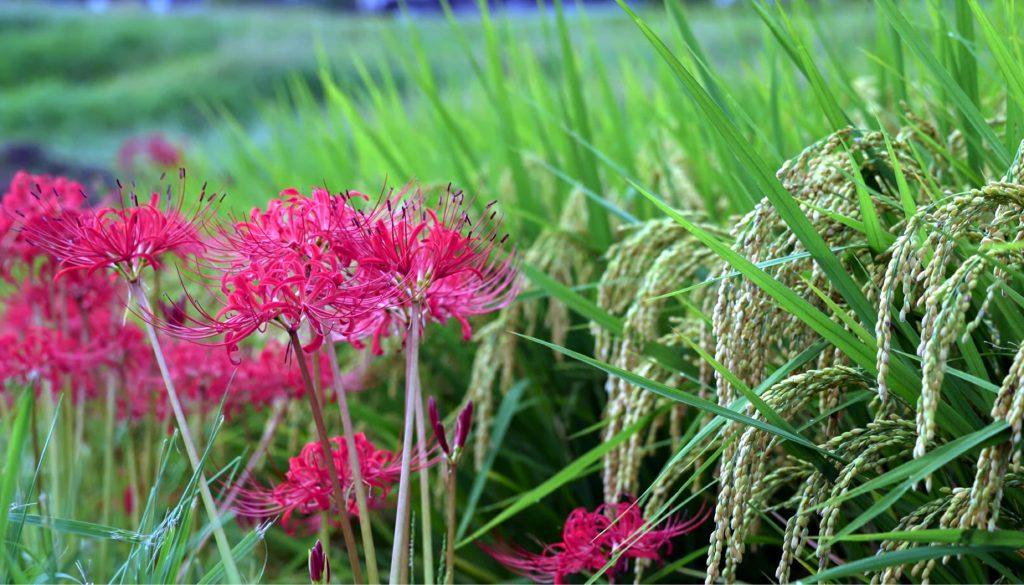
The heat of summer has passed its peak, and the rice stalks in the paddy fields are about to be harvested. Suddenly, red spider lilies bloom, as if they have agreed to do so. They seem to be celebrating the rice that has grown for about half a year after being transplanted in the spring and overcoming the scorching heat.
After blooming, red spider lilies grow leaves, and they wither in the early summer of the following year. Red spider lilies are poisonous plants that have strong toxicity in their underground bulbs. In the past, they were eaten after the starch in the bulbs was detoxified as a famine food. They are also often planted in the borders of rice fields and cemeteries, using their strong odor and toxicity to protect rice fields from moles and rats, and to protect the bodies of the dead from animals during burial.
For this reason, red spider lilies have many other nicknames besides the alternative name “Manjusha”. However, recently, the active ingredient of red spider lilies, galanthamine, has been said to be useful for Alzheimer’s disease. As a result, the Alzheimer’s disease drug “Reminyl” was released in 2011.
The red spider lilies are now in full bloom, and they are a flower with endless topics, not to mention their beauty.
夏の暑さも峠を越し、田んぼの稲穂が収穫を迎えようとする頃、申し合わせた様に突然彼岸花が開花します。春先に田植えされ、酷暑を乗り切り、およそ半年かけて実った稲穂を祝福している様です。彼岸花は、花を咲かせたあと葉を伸ばし、翌年の初夏には枯れてしまいます。彼岸花は地下の鱗茎(球根)に強い毒性を有する有毒植物ですが、かつては、飢饉の折の救荒作物として鱗茎のデンプンを毒抜きして食べられていました。また、田んぼの畦やお墓にもよく植えられているのも、彼岸花の異臭や有毒性を利用して、田んぼをモグラやネズミから守る為であり、土葬時の遺体を動物から守るためと言われています。その為、彼岸花には、曼珠沙華の別名以外に、幽霊花、死人花、墓花、地獄花といったあらぬ呼び名がたくさんあります。しかし、最近話題になったのは、彼岸花の含有成分のガランタミンが、アルツハイマーに有用だと言う事で、アルツハイマー型認知症治療薬「レミニール」が2011年に発売されたことです。今真っ盛りの彼岸花ですが、その美しさもさることながら、話題の尽きない花です。
